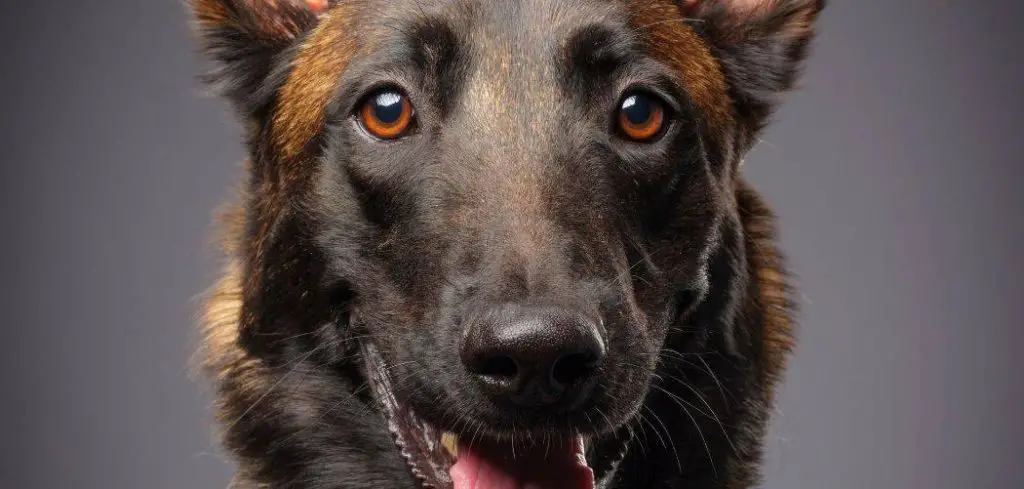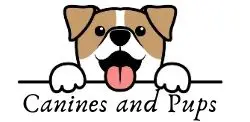When a dog is vomiting, has diarrhea, and not eating, it’s a serious cause for concern. Dog parents know that occasional digestive upset can happen, but when multiple symptoms appear together and persist, it often points to a deeper issue.
Knowing the causes of vomiting and diarrhea in dogs and understanding why your dog refuses to eat can help you act quickly and responsibly.
We discuss the potential reasons behind these symptoms, what home treatments you can consider, and when it’s critical to seek veterinary care.
Table of Contents
Here’s why your dog is vomiting, has diarrhea and not eating
If your dog is vomiting, has diarrhea, and is not eating, it often signals a significant underlying health issue that needs prompt attention. These symptoms together can result from mild causes like dietary indiscretion or stress, but they can also point to serious problems such as infections, pancreatitis, toxin ingestion, or organ disease. Loss of appetite alongside vomiting and diarrhea increases the risk of dangerous dehydration, making it important to act quickly.

Common Causes of Vomiting, Diarrhea, and Appetite Loss in Dogs
When your dog is vomiting and has diarrhea but refuses to eat, understanding the potential underlying causes can help you act quickly and effectively.
1. Gastrointestinal Infections
One of the leading causes of vomiting and diarrhea in dogs is gastrointestinal infection. Whether bacterial, viral, or parasitic, these infections can disrupt your dog’s gut health severely.
For instance, dog vomiting and diarrhea due to infection is often caused by viruses like parvovirus (especially deadly in puppies) or bacteria such as salmonella and campylobacter. These infections can come from contaminated water, spoiled food, or even close contact with infected animals.
Symptoms of infections include:
Persistent vomiting
Watery or bloody diarrhea
Severe dehydration
Lethargy
Fever
If your dog shows these signs, prompt veterinary care is crucial.
2. Dietary Indiscretion (Eating Something They Shouldn’t)
If your dog is vomiting after eating something bad, such as garbage, spoiled food, or a foreign object, it can lead to gastrointestinal distress. Dogs are natural scavengers and will often ingest things that upset their stomachs.
Typical signs of dietary indiscretion include:
Vomiting with partially digested food
Diarrhea that may be watery or foul-smelling
Loss of appetite
In minor cases, a bland diet and rest can help your dog recover. However, if symptoms worsen, ingestion of a toxic or sharp object could be the culprit and would require immediate vet attention.
3. Pancreatitis
Another serious reason your dog may be vomiting, have diarrhea, and show no interest in eating is pancreatitis, which is inflammation of the pancreas. Pancreatitis often develops after a dog consumes a very fatty meal, but it can also occur spontaneously.
Dog vomiting diarrhea pancreatitis symptoms to watch for:
Severe, repeated vomiting
Watery, sometimes greasy diarrhea
Abdominal pain (your dog may cry out or have a hunched posture)
Refusing food and water
Weakness or collapse
Pancreatitis requires urgent medical treatment, usually including hospitalization, IV fluids, pain relief, and dietary management.
4. Toxin Ingestion
Many household items are toxic to dogs. If your dog is vomiting, has diarrhea, and is not eating, think about whether they might have consumed something dangerous like chocolate, grapes, household cleaners, rodenticide, or toxic plants.
Dog vomiting diarrhea toxin ingestion signs often appear rapidly:
Vomiting and diarrhea within hours of ingestion
Severe drooling
Tremors or seizures
Abdominal pain
Collapse
If you suspect toxin ingestion, seek emergency veterinary care immediately — treatments like inducing vomiting or administering activated charcoal must be done quickly.
5. Parasites
Intestinal parasites are a common cause, especially in puppies and rescue dogs. Dog vomiting diarrhea caused by parasites often includes:
Chronic loose stools
Vomiting intermittently
Visible worms in stool or vomit
A bloated abdomen despite weight loss
Routine fecal exams and deworming medications can help diagnose and treat parasite problems early.
6. Serious Underlying Conditions
Sometimes, vomiting, diarrhea, and inappetence are signs of serious diseases such as kidney failure, liver disease, Addison’s disease, or certain cancers.
When dog vomiting diarrhea signs of serious disease are present, symptoms may include:
Excessive drinking or urination
Jaundice (yellowing of the gums or eyes)
Sudden weight loss
Severe weakness or fainting episodes
Early veterinary intervention is vital for improving outcomes in these cases.
Related: Dog throwing up and drooling (Explained)
What You Should Do If Your Dog Is Vomiting, Has Diarrhea, and Refuses Food
When your dog is not eating and has diarrhea and vomiting, quick and careful action is needed.
1. Assess the Severity of Symptoms
Start by monitoring your dog closely:
Is vomiting continuous or occasional?
Is the diarrhea bloody or unusually foul-smelling?
Is your dog listless, weak, or showing signs of pain?
How long has your dog refused food?
Knowing when to worry about dog vomiting and diarrhea is important. If symptoms are mild and your dog is otherwise alert, you might try at-home care. If symptoms are severe or prolonged beyond 24 hours, call your vet.
2. Withhold Food for a Short Time
Allowing your dog’s stomach to rest can help if the case seems mild. Vets typically recommend withholding food for 12–24 hours (but not water).
After this fasting period, you can offer a bland diet such as:
Boiled chicken (no skin or bones) and white rice
Boiled ground turkey and pumpkin
Prescription gastrointestinal diets from your veterinarian
Following a bland diet for dog vomiting and diarrhea can help reintroduce food gently and prevent further irritation.
3. Maintain Hydration
Vomiting and diarrhea can quickly dehydrate a dog. Learn how to keep a dog hydrated with diarrhea and vomiting:
Offer small amounts of fresh water frequently
Use unflavored Pedialyte (after vet consultation)
Ice chips can be easier to keep down if drinking triggers vomiting
If your dog shows signs of dehydration like sticky gums or sunken eyes, veterinary fluids may be required urgently.
4. Monitor Progress Closely
If your dog starts eating small amounts and the diarrhea/vomiting resolve within 24–48 hours, you’re probably in the clear. However, if your dog is not eating, diarrhea and vomiting persist, or if new symptoms develop (such as collapse, weakness, or blood in stool), seek veterinary help without delay.
Related: Dog diarrhea and shaking (Explained)
When You Must See the Vet
You should seek immediate veterinary care if:
Vomiting or diarrhea is constant or severe
There is blood in the vomit or stool
Your dog appears extremely weak, disoriented, or collapses
There’s a hard, swollen abdomen
No improvement occurs after 24 hours
Knowing when to seek an emergency vet for dog vomiting and diarrhea could be life-saving.
Veterinarians can perform diagnostics like blood tests, stool analysis, ultrasounds, or X-rays to pinpoint the cause and start treatments such as:
IV fluids and electrolytes
Anti-nausea medications
Antibiotics or dewormers
Surgery in severe cases
How to Prevent Vomiting, Diarrhea, and Appetite Loss in Dogs
While you can’t prevent every illness, you can lower risks dramatically by:
Keeping all toxic foods and substances out of reach
Regular deworming and fecal exams
Feeding a consistent, high-quality dog food
Avoiding fatty table scraps
Keeping your dog vaccinated against contagious viruses
Supervising your dog during outdoor activities to avoid scavenging
Taking these steps can go a long way toward preventing dog vomiting, diarrhea, and appetite loss.
Conclusion
When your dog is vomiting, having diarrhea, and not eating, it’s more than just a minor stomach upset — it could be a sign of infection, toxin ingestion, organ dysfunction, or something else requiring swift intervention.
While minor cases might resolve at home with fasting, hydration, and a bland diet, serious cases demand immediate veterinary attention. If you’re ever in doubt, err on the side of caution — your dog’s life may depend on quick, decisive action.
Always prioritize your dog’s health and happiness. Acting early often makes all the difference between a simple recovery and a complicated, expensive medical crisis.
